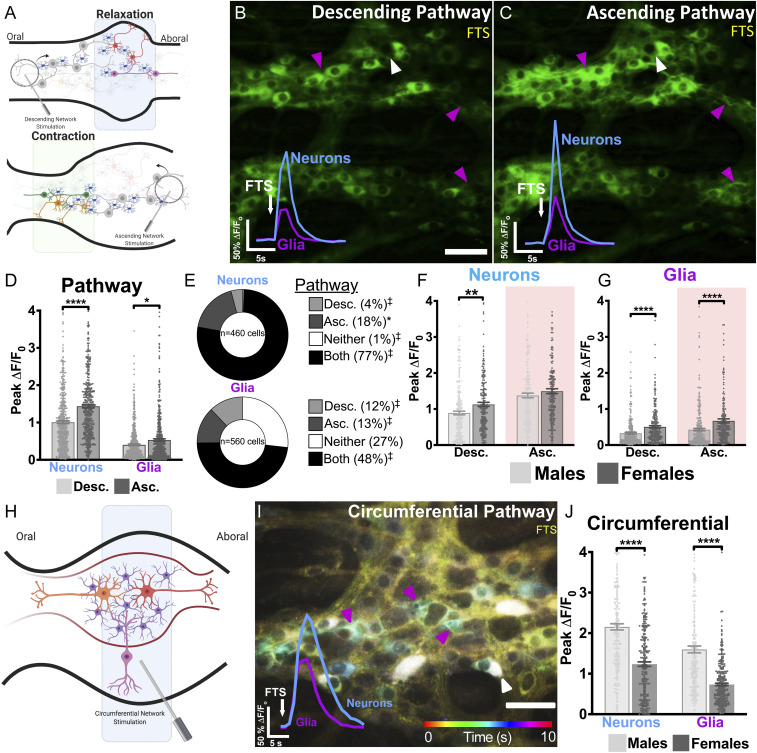Fig. 2.
Functionally specified networks of neurons and glia in myenteric neurocircuits. (A) Schematic diagram illustrating how the peristaltic reflex was experimentally manipulated using a concentric bipolar focal tract stimulator. Stimulating ganglia from the oral direction activates the descending neural circuitry associated with gut relaxation (Top). Applying the same stimulus from the aboral side activates the ascending circuit pathway controlling gut contraction (Bottom). Although not explicitly shown here, some populations of neurons and glia are functionally associated with both pathways. (B and C) Representative images depicting Ca2+ responses provoked by descending or ascending FTS. Descending and ascending FTS stimulate distinct populations of neurons (white arrowhead) and glia (magenta arrowhead). Representative time courses (Bottom Left Insets) demonstrate the average Ca2+ response evoked in the same population of neurons and glia. (D) Compared with the descending pathway, ascending synaptic activity categorically provokes larger Ca2+ responses in both neurons and glia. (E) Ascending and descending FTS recruit functionally distinct subpopulations of neurons and glia. Some neurons and glia are activated by both ascending and descending FTS (“Both”), whereas fewer neurons are exclusively activated by ascending (“Asc.”) or descending (“Desc.”) FTS alone. If randomly distributed between these functional classes, ∼25% of cells would be associated with each category. ‡P < 0.0001 and *P < 0.05 by two-tailed χ2 test comparing observed values with these expected proportions. (F and G) In the descending pathway, both neurons and glia are more robustly activated in females than males. In the ascending pathway, glia but not neurons are more robustly activated in females than males. (H) Schematic diagram showing how the circumferential pathway was activated by placing a focal tract stimulator on fiber tracts leading to the ganglion in the circumferential axis. (I) Color-coded temporal image displays Ca2+ responses in myenteric neurons and glia over time (10 s) triggered by circumferential FST. Traces show averaged responses of neurons and glia to c-FST within the ganglion. (J) Sex differences in overall Ca2+ response magnitudes in the pool of enteric neurons and glia recruited by the circumferential pathway. Bars represent means ± SEM (*P < 0.05, **P < 0.01, and ****P < 0.0001, two-tailed unpaired Mann–Whitney U test).

